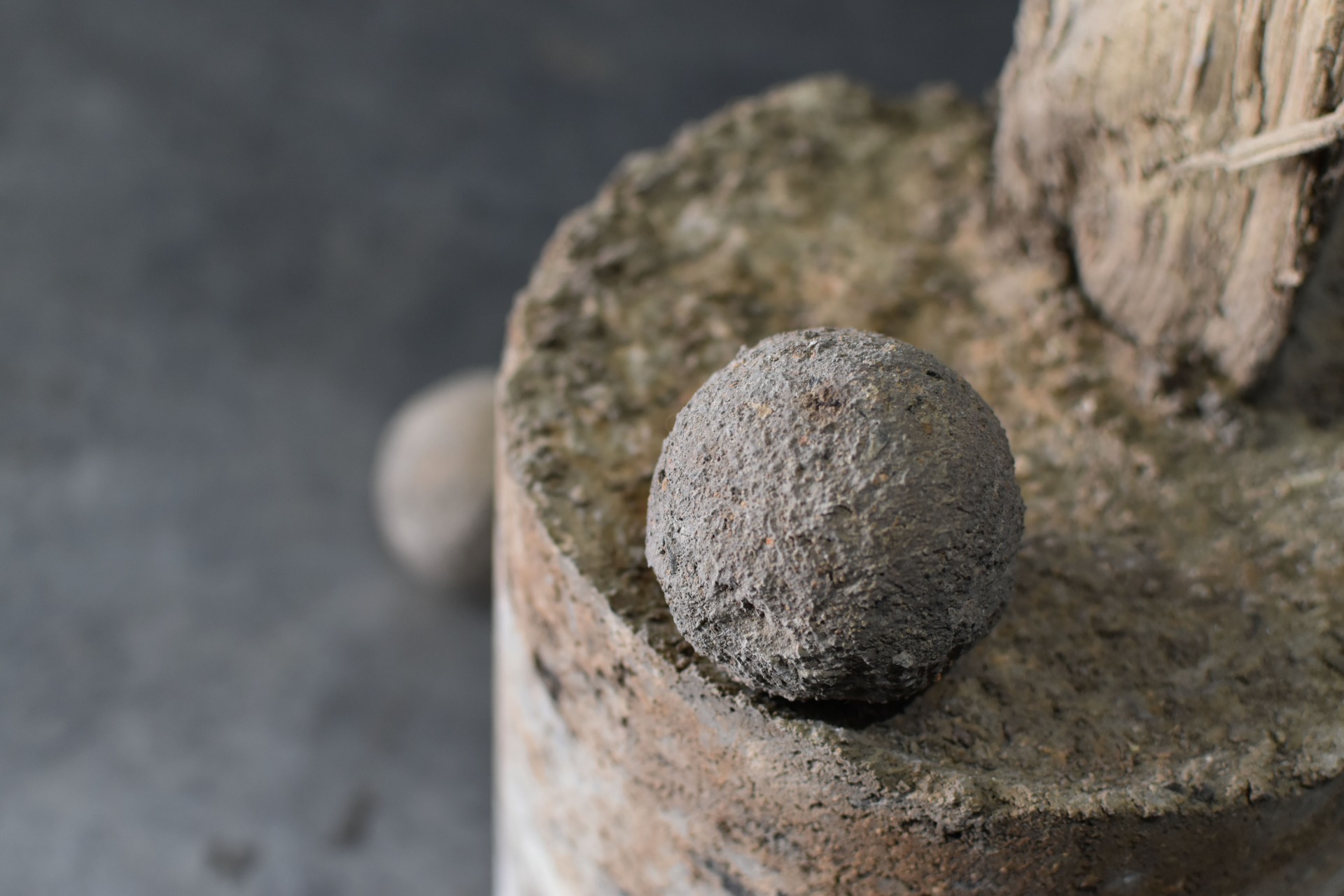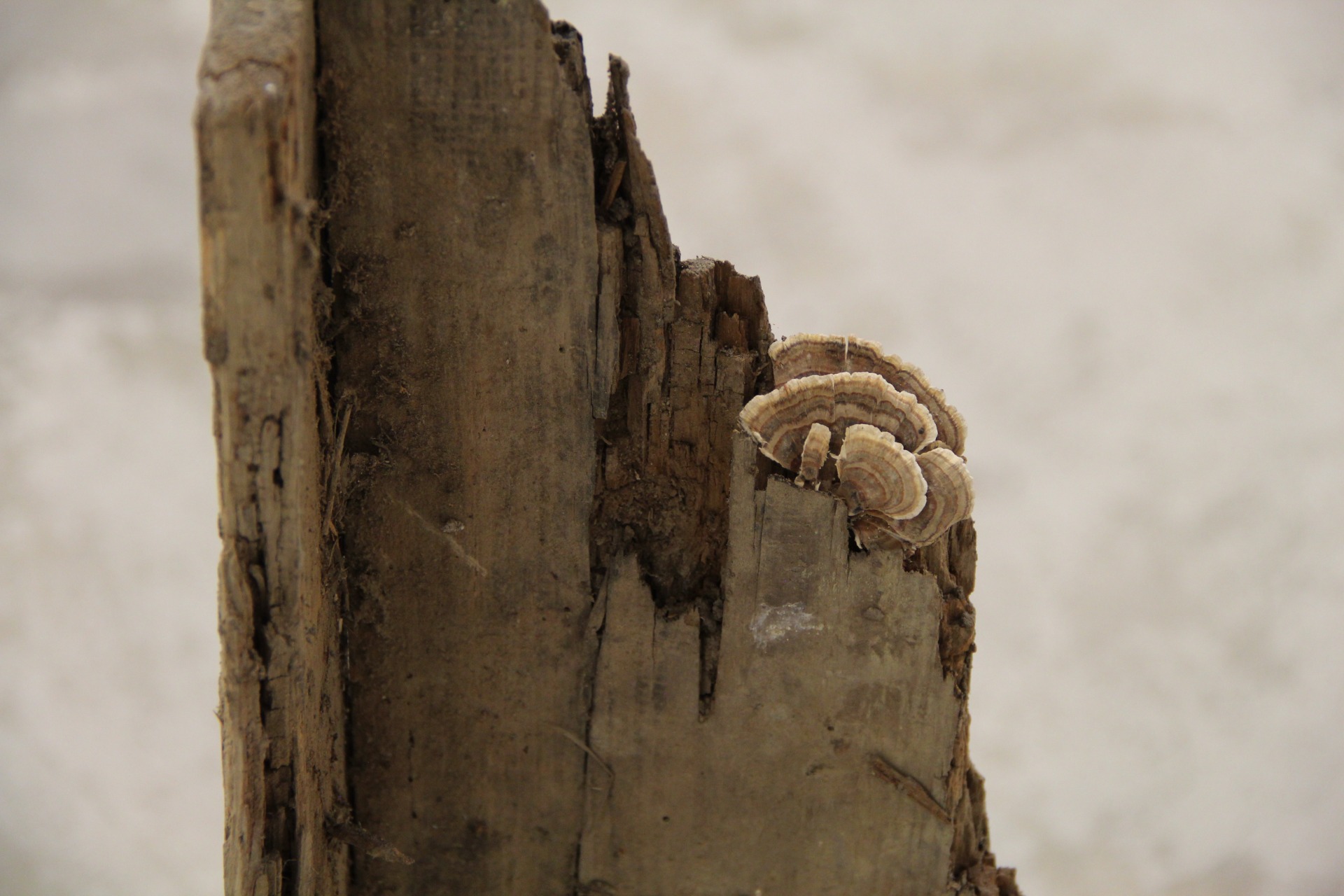
Z HĹBKY BUKOVÝCH LESOV FROM THE DEPTHS OF BEECH FORESTS autorstvo / authors: Simona Novická, Martin Hrvol vernisáž / opening: 28.10. 2025 | utorok / Tuesday | 19:00. kurátor / curator: Adam Galko trvanie výstavy / duration: 29.10. - 13.12. 2025 st / Wed. 12:30 - 17:00 | so / Sat. 13:00 - 17: 30 ostatné dni po telefonickej dohode other days by telephone agreement +421 951 559 379
__ S kurátorský text / curatorial text, EN below Kým umelci 19. a 20. storočia používali prírodu ako znak, ako obraz nesputnanosti, slobody či identity, dnes ju vnímame predovšetkým z perspektívy environmentálnej krízy. V maliarstve barbizonskej školy bola krajina metaforou prirodzenosti a úniku, v slovenskom výtvarnom umení sa zas stala politickou kulisou národnej identity. Dnes sa však z tohto znaku stal metaznak: pozeráme sa naň s odstupom, kriticky, vedomí si jeho vrstiev a kontextov. "Zelené" sa stalo mantrou, zaklínadlom, útechou aj komoditou, obsahom, námetom aj nástrojom. Od používania krajiny ako objektu sme prešli k využívaniu ekologických diskurzov, ktoré často reprodukujú podobné mocenské štruktúry ako kedysi. U niektorých autorov sa však objavuje iné východisko, také, ktoré nie je manifestom, ale rozprávaním, nie ideológiou, ale vzťahom. Také, ktoré k prírode nepristupuje ako k téme, ale ako k partnerovi spoločného príbehu.
Ak sme už prekonali dichotómiu človek verzus príroda, môžeme uvažovať aj o tom, že umelec či umelkyňa už nepoužíva materiál ako médium. Nestojí nad ním z pozície moci, aby ho pretváral, ale hľadá si cestu k rovnocenému vzťahu. Materiál sa tak nestáva len sprostredkovateľom umeleckého zámeru, ale partnerom v procese vzniku diela. Namiesto tradične chápanej mediálnosti ako spôsobu, ktorým autor / autorka formuje a "opravuje" svet, nastupuje zmena pozície autorstva z mediálneho tvorcu / mediálnej tvorkyne na mediátora / mediátorku. Autor a autorka upúšťajú od jednoznačných ekologických deklarácií a preberajú skôr rolu tlmočníkov nenápadných vzťahov medzi prírodou a človekom, medzi materiálom, jeho významom a pamäťou.
V tomto zmysle môžeme vnímať objekty Simony Novickej v ich časovej celistvosti – od uhlia cez architektúru k stromu a späť. Sú obrazom cyklu, v ktorom nič nie je trvalé, len premenlivé. Uhlík v materialite popola, tu nie je chápaný ako symbol dopadu environmentálnej krízy, ale skôr mysticky, ako súčasť kolobehu, v ktorom má zrod aj zánik svoju nezastupiteľnú úlohu. Podobne uvažuje aj Martin Hrvol, ktorý prepája priemyselný materiál s organickým prostredím nie ako jeho negáciu, ale ako predĺženie či protézu prírody. V duchu krajinológie sa pozerá na odpad ľudskej činnosti nie ako na čisto deštruktívny prvok, ale ako na súčasť širších procesov, ktoré ovplyvňujú a niekedy dokonca udržiavajú krehké ekosystémy.
Spoločná výstava Z hĺbky bukových lesov je miestom stretnutia, dialógu ambivalentných poetík. V kontexte súčasnej krízy vyhrotených diskurzov neponúka riešenia ani odpovede na ekologické výzvy, neťaží zo zvyškov krajinárskeho romantizmu ani zo sentimentu návratu k prírode. Načúva vzdialeným perifériám, nepriepustným okrajom našich lesov a prehliadaným výpovediam ich previazaných súčastí.
Adam Galko
Simona Novická *1997 študovala na Vysokej škole výtvarných umení v Bratislave v Ateliéri voľného sochárstva pod vedením Štefana Papča. Participovala na niekoľkých výstavách na Slovensku a v zahraničí; momentálne žije a tvorí v Bratislave. S citom pre materiál sa venuje objektovej tvorbe a inštalácii; vo svojej tvorbe pracuje s témou pamäti, každodennosti, času a s procesualitou. Jej diela sú tiché, poetické a citlivé; často prepája prírodné a urbánne prostredie, kde kladie dôraz na autenticitu a ne/dokonalosť materiálu.
Martin Hrvol *1989 je absolvent magisterského štúdia na Vysokej škole výtvarných umení v Bratislave. Venuje sa najmä tvorbe priestorových inštalácií, často pracuje s prírodnými materiálmi, tematizuje mýty a prácu s architektonickými formami. Je víťazom deviateho ročníka ceny EXIT 2019. V súčasnosti pôsobí ako doktorand na katedre VŠVU Socha, objekt, inštalácia.
"Objekty zobrazujú stav po určitej kríze. Chybe spôsobenej následkami poveternostných podmienok či antropologického tlaku, čím zobrazujú určitú časovosť. Ide aj o schopnosť odolnosti a pružnosti. Schopnosť materiálu alebo ľudskej identity podľahnúť kríze a odolávať tlaku. Ide aj o rozpoznanie momentu, kedy sa veci nedejú tak, ako sa naplánovali. O schopnosti pochopiť súvislosti pre našu účasť na živote, kedy sa pre časť sveta stávam interpretáciou. A to nie len ako identita, ale aj ako materiál a príroda."
Projekt z verejných zdrojov podporil Fond na podporu umenia.
__
EN Whilst the artists of the 19th and 20th centuries used nature as a symbol of untamed freedom and identity, today we perceive it primarily from the perspective of environmental crisis. In the painting of the Barbizon school, the landscape was a metaphor for naturalness and escape, while in Slovak visual art it became a political backdrop for national identity. Today, however, this symbol has become a meta-symbol: we view it with distance and criticism, aware of its layers and contexts. "Green" has become a mantra, a spell, a consolation and a commodity, a content, a theme as well as a tool. From using the landscape as an object, we have moved on to using ecological discourses, which often reproduce similar power structures as in the past. However, some authors offer a different approach, one that is not a manifesto but a narrative, not an ideology but a relationship. One that does not treat nature as a theme but as a partner in a shared story.
If we have already overcome the dichotomy of man versus nature, we can also consider that artists no longer use materials as a medium. They do not stand above them in a position of power to transform them, but seek a path to an equal relationship. The material thus becomes not only a mediator of artistic intent, but a partner in the process of creating the work. Instead of the traditionally understood mediality as a way in which the author shapes and "corrects" the world, there is a shift in the position of authorship from media creator to mediator. The authors are moving away from unambiguous ecological declarations and are instead taking on the role of the interpreters of the subtle relationships between nature and man, the material, its meaning, and its memory.
If we have already overcome the dichotomy of man versus nature, we can also consider that artists no longer use materials as a medium. They do not stand above them in a position of power to transform them, but seek a path to an equal relationship. The material thus becomes not only a mediator of artistic intent, but a partner in the process of creating the work. Instead of the traditionally understood mediality as a way in which the author shapes and "corrects" the world, there is a shift in the position of authorship from media creator to the mediator. The authors are moving away from unambiguous ecological declarations and are instead taking on the role of the interpreters of subtle relationships between nature and man, the material, its meaning and its memory.
In a sense, we can perceive Simona Novická's objects in their temporal entirety – from coal through architecture to a trees and back. They are an image of a cycle in which nothing is permanent, only changeable. Carbon as ash is not understood here as a symbol of the impact of environmental crisis, but rather mystically, as part of a cycle in which birth and death have their irreplaceable role. Martin Hrvol thinks similarly, connecting industrial material with organic environment not as its negation, but as an extension of nature. In the spirit of landscape studies, he views the waste of human activity not as a purely destructive element but as part of broader processes that influence and sometimes even maintain fragile ecosystems.
The joint exhibition "From the Depths of Beech Forests" is a meeting point, a dialogue of ambivalent poetics. In the context of the current crisis of heated discourse, it offers neither solutions nor answers to ecological challenges, nor does it draw on the remnants of landscape romanticism and the sentiments of return to nature. It listens to distant peripheries, the impervious edges of our forests and the overlooked calls of their interconnecting elements.
Adam Galko
Simona Novická *1997 studied at the Arts Academy of Fine and Design in Bratislava in the Studio of Free Sculpture under the guidance of Štefan Papčo. She has participated in several exhibitions in Slovakia and abroad; she currently lives and works in Bratislava. With a keen sense of material she devotes herself to object creation and installation; in her work, she deals with the themes of memory, everyday life and the flow of time. Her works are quiet, poetic and sensitive; she often connects natural and urban environments, emphasizing the authenticity and imperfection of the material.
Martin Hrvol *1989 is a graduate of the Academy of Fine Arts and Design in Bratislava. He mainly focuses on creating spatial installations, often working with natural materials, exploring myths and working with architectural forms. He is the winner of the ninth annual EXIT 2019 award and currently a doctoral student at the Department of Sculpture, Object and Installation at the Academy of Fine Arts and Design.
"The objects depict a state after a certain crisis. A fault caused by the effects of weather conditions or anthropological pressure, thus depicting a certain temporality. It is also about the ability to resist and be flexible. The ability of material or human identity to succumb to crisis and resist pressure. It is also about recognizing the moment when things do not go as planned. About the ability to understand the connections for our participation in life, when I become an interpretation for part of the world. And not only as an identity, but also as material and nature."
The project was supported by public funds from the Slovak Arts Council.
partneri


